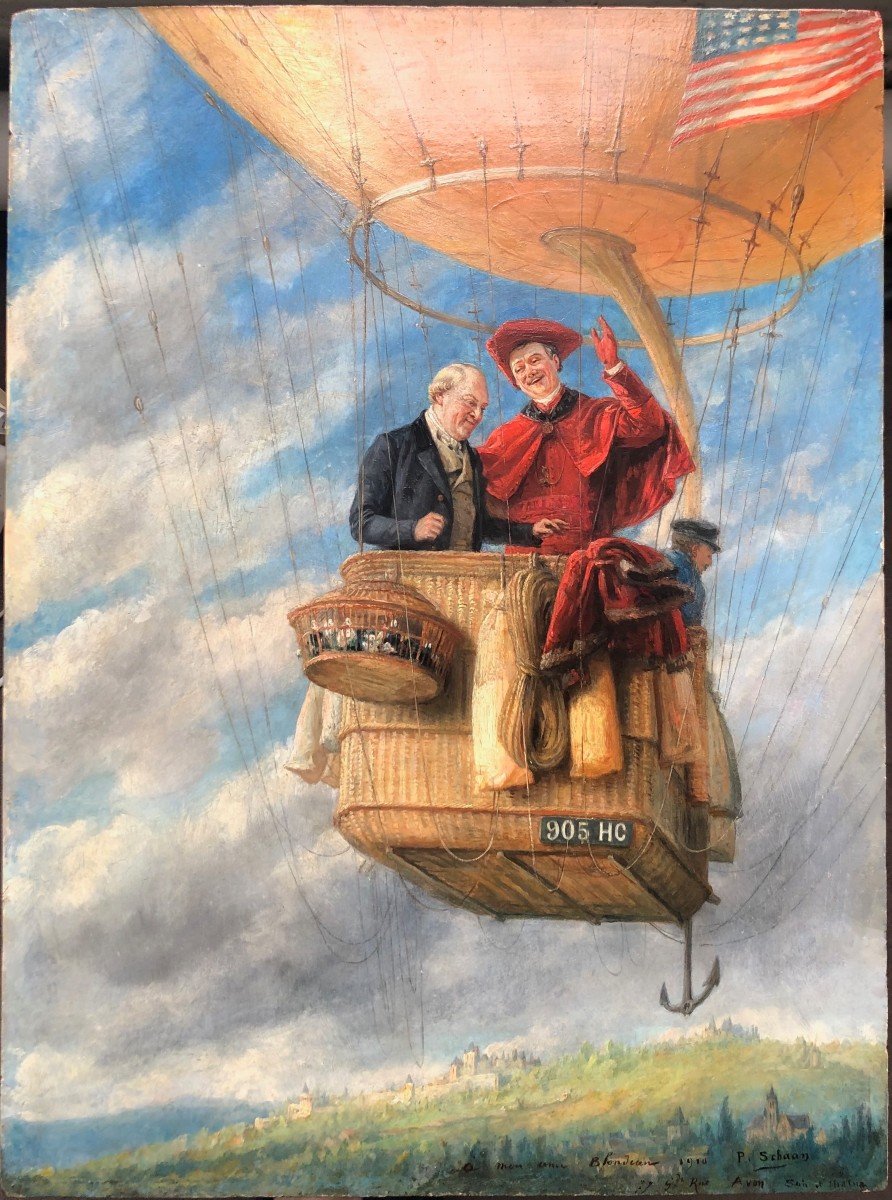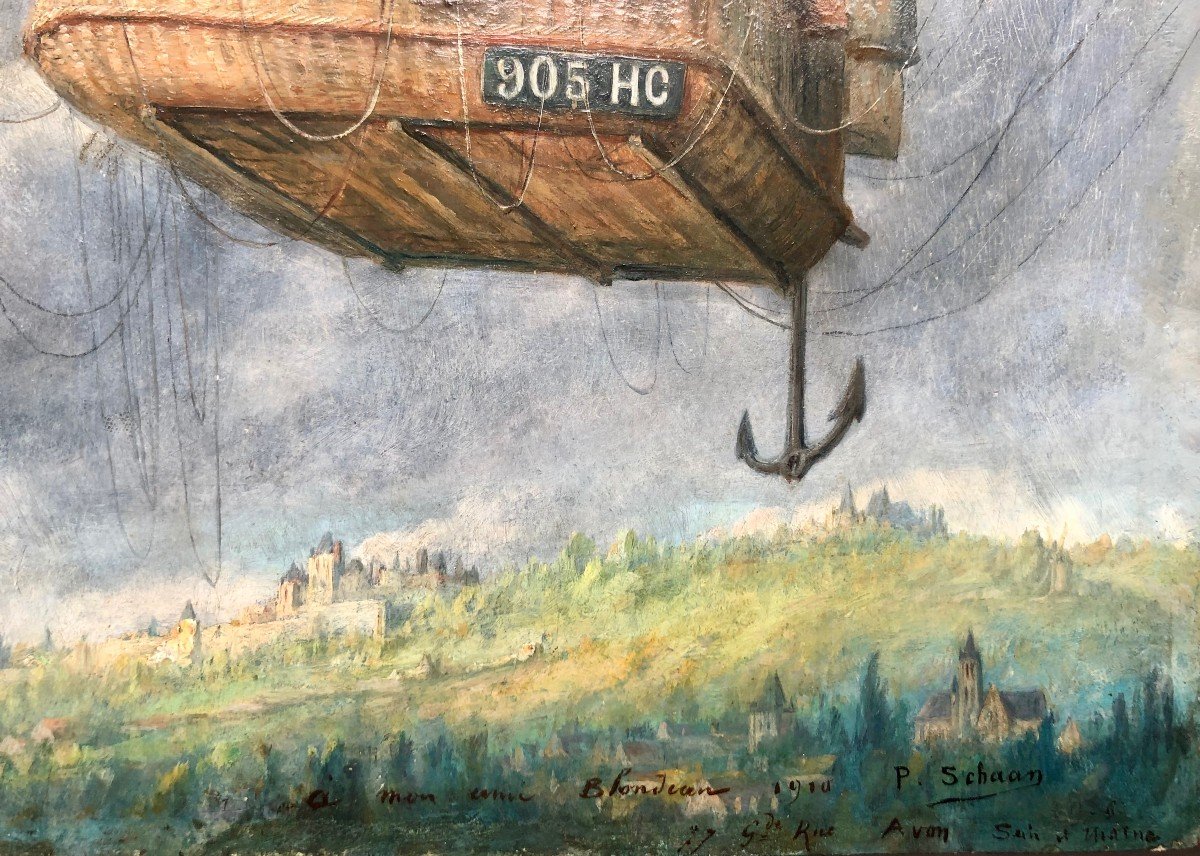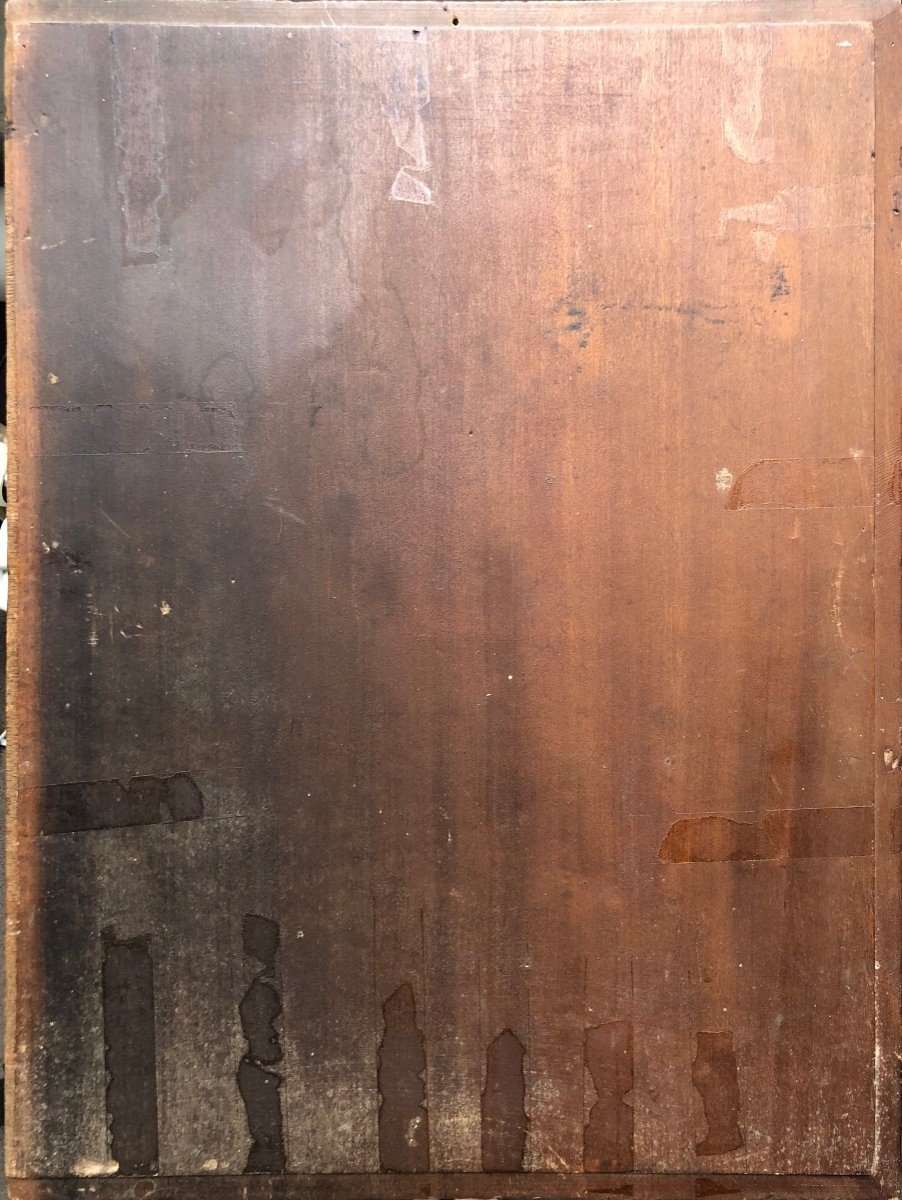The panel measures 46 x 34 cm.
Biography
Family Almost nothing is known about his father's origins. His mother, Francis Laure Augustine Schaan, born in 1828, was an opera pianist. She lives in the upper middle class and she gives numerous concerts in international capitals (London, Vienna, New York, Berlin, Saint Petersburg) where she sometimes stays for several months, even several years. She herself is the daughter of the piano maker Jacques Schaan, born in 1799, and of Louise Augustine Thomas, born in 1809, whose Parisian family was cabinetmaker. Training After his studies at the Paris School of Fine Arts, Paul Schaan essentially had four masters. In 1880, he was a student of M. Jeannin and Jean-Baptiste Lavastre, then of JB Lavastre alone between 1888 and 1890. From 1893 to 1910, he was a student of Antoine Guillemet. Finally, from 1910 to 1913, he was a student of A. Guillemet and Édouard Detaille together. Career Member of the Society of French Artists, he began in 1880 at the Paris Salon, then exhibited fairly regularly every year until 1914. In 1892, he received an honorable mention there, for his work Le cloître de Saint Rémi, currently Hôtel God of Reims. Between 1909 and 1913, he exhibited six works at the Salon de l'école française. Residing in Paris until around 1910, the artist painted numerous scenes of city life which included the places he wanted to immortalize, such as the Vérité passage. The City of Paris commissioned paintings from him depicting places slated for demolition such as the unsanitary Tanneurs district in 1898, the facade of the Saint Lazare prison in 1903, the Père Lunette cabaret, rue des Anglais in 1906, or the prison of the Great Rocket. The Eiffel Tower and the Sacré-Cœur basilica of Montmartre can be seen under construction in his large painting Paris seen by Ménilmontant (1894). These paintings are kept at the Carnavalet Museum. His work Paris seen from Montretout (1889) also bears witness to this work. We can see the Eiffel Tower nearing completion as well as the pavilions of the Paris Universal Exhibition of 1889. Between 1890 and 1914, the artist specialized in anecdotal subjects, then fashionable, featuring ecclesiastics in luxurious private settings. Most of his paintings are set in the rooms of the Château de Fontainebleau where many of the items of furniture represented are still on display today. His painting always reflects a great attention to detail to which are added touches of anticlerical irony. It is by creating these paintings that the artist reveals his qualities as a portrait painter. His works then enjoyed great success, particularly in the United States. Finally, the artist painted numerous seascapes and scenes from southern Brittany where he went on vacation every year to a friend who owned a fish cannery. He notably painted the Chapel of Loctudy there. He died suddenly on May 27, 1924 while leaving a painting gallery on rue du Faubourg Saint-Honoré in Paris, where one of these seascapes was on display.








































 Le Magazine de PROANTIC
Le Magazine de PROANTIC TRÉSORS Magazine
TRÉSORS Magazine Rivista Artiquariato
Rivista Artiquariato